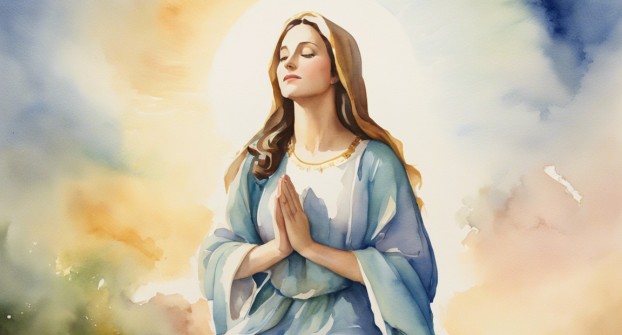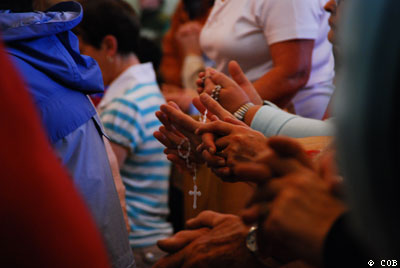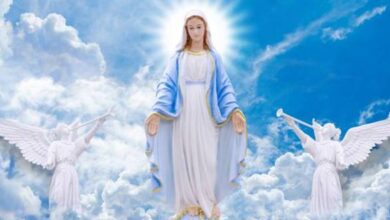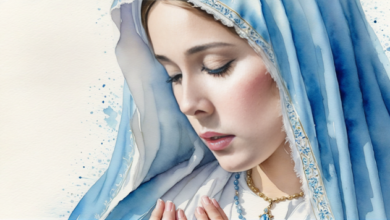The Assumption of Mary: A Glorious Sign of Hope and Fulfillment

The Feast of the Assumption of the Blessed Virgin Mary, celebrated on August 15th, is one of the most significant Marian solemnities in the Catholic Church. This day commemorates the belief that Mary, at the end of her earthly life, was taken up body and soul into Heaven, where she now reigns as Queen of Heaven and Earth.
Significance of the Assumption
The Assumption of Mary is deeply rooted in the Church’s understanding of Mary’s unique role in salvation history. As the Mother of God (Theotokos), Mary was preserved from original sin from the moment of her conception (the Immaculate Conception) and lived a life of perfect obedience and fidelity to God’s will. This immaculate state, combined with her divine motherhood, led to the belief that Mary would not undergo the corruption of the grave, but would be assumed into Heaven at the end of her earthly life.
This belief was solemnly defined as a dogma of the Catholic faith by Pope Pius XII in 1950, in the Apostolic Constitution Munificentissimus Deus. The Assumption underscores Mary’s special place in the divine plan and serves as a foretaste of the resurrection of the faithful, offering hope and encouragement to all believers.
Biblical Foundation
While the Assumption is not explicitly described in the Bible, Catholics believe it is implicitly supported by several passages of Scripture. One of the most significant references is found in the Book of Revelation:
Revelation 11:19; 12:1-2: “Then God’s temple in heaven was opened, and the ark of his covenant was seen within his temple; and there were flashes of lightning, rumblings, peals of thunder, an earthquake, and heavy hail. And a great portent appeared in heaven: a woman clothed with the sun, with the moon under her feet, and on her head a crown of twelve stars; she was with child and she cried out in her pangs of birth, in anguish for delivery.”
In this passage, the “woman clothed with the sun” is often interpreted by Catholics as a symbol of Mary, who is seen in her glorified state in Heaven. The image of the Ark of the Covenant in Heaven further reinforces this connection, as Mary is understood to be the new Ark of the Covenant, bearing within her the Word of God made flesh, Jesus Christ.
Another relevant passage is found in Psalm 132:8: “Arise, O Lord, into thy rest; thou and the ark of thy strength.”
This verse is interpreted as a foreshadowing of Mary’s Assumption, as she, the true Ark, is taken up to the Lord’s rest in Heaven.
Why Catholics Believe in the Assumption
The Assumption is believed by Catholics because it reflects God’s justice and mercy. It would be fitting that the one who bore God’s Son, who remained sinless and fully obedient to His will, would be preserved from the decay of death. The Assumption is also seen as a sign of hope, pointing to the resurrection of all believers at the end of time. Just as Mary was assumed into Heaven, so too will those who die in Christ be raised up on the last day.
The belief in the Assumption is not merely a pious tradition but a truth deeply woven into the fabric of Catholic theology. It emphasizes the dignity of the human body, the victory over sin and death, and the ultimate fulfillment of God’s promise to His faithful.
Importance of the Feast
The Assumption is a day of great joy and hope for Catholics. It invites the faithful to reflect on Mary’s role as a model of holiness and a powerful intercessor. As we honor her Assumption, we are called to follow her example of faith, humility, and obedience to God’s will.
Moreover, the Assumption reminds us of our ultimate destiny as Christians: to be united with God in Heaven, body and soul. It is a celebration of the victory of life over death, of grace over sin, and of the glory that awaits all who remain faithful to God.
As we celebrate this feast, let us turn to Mary, asking her to intercede for us, that we may live in God’s grace and one day share in the glory of Heaven.






